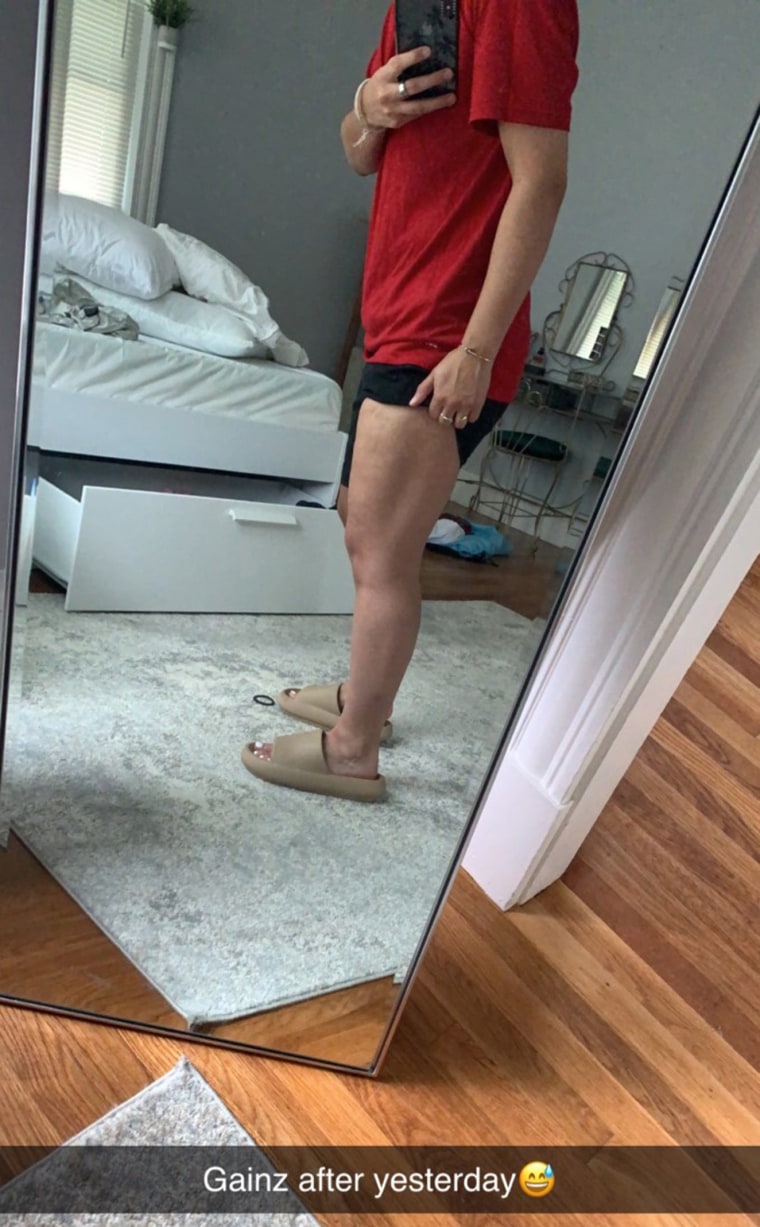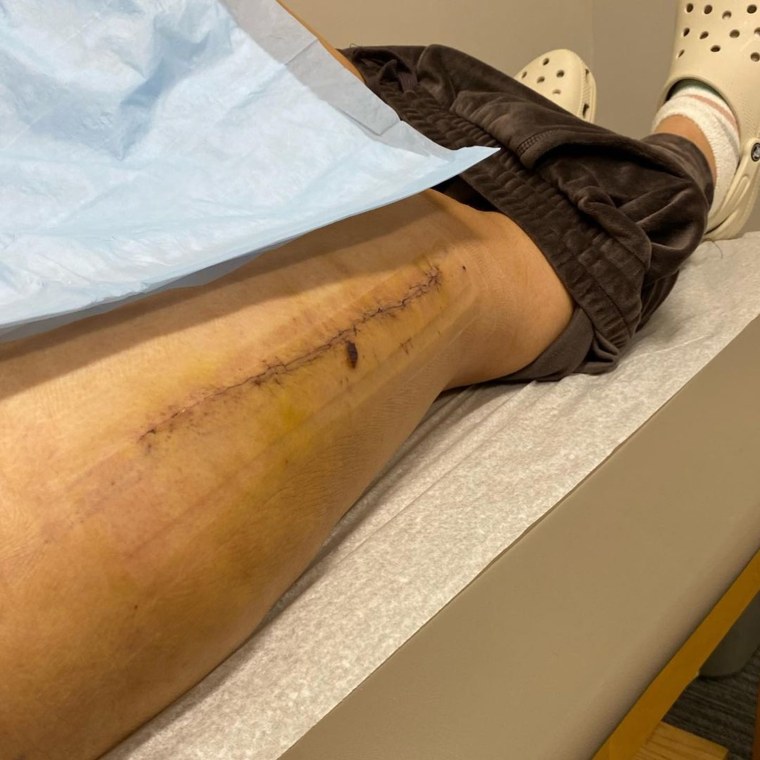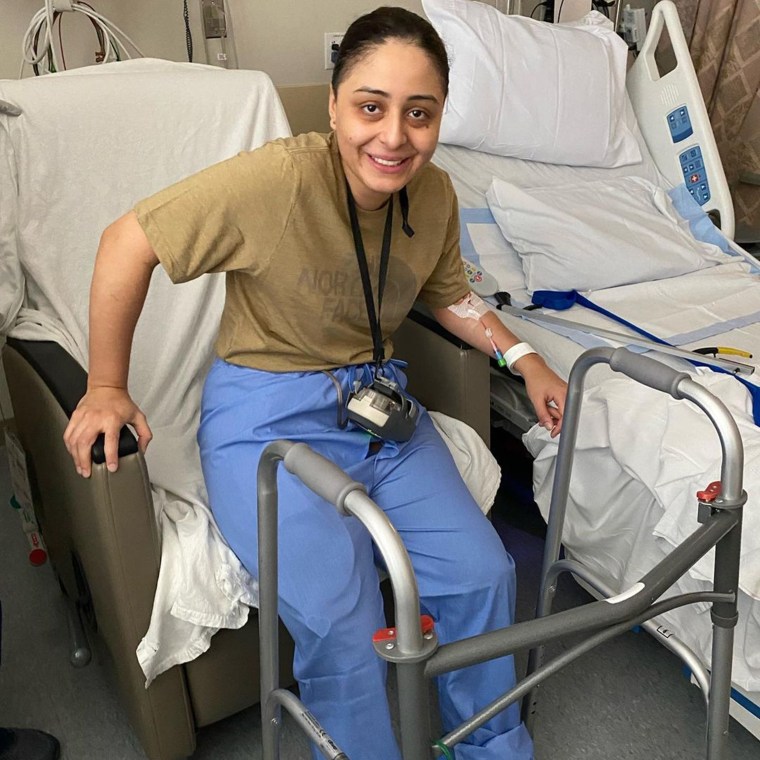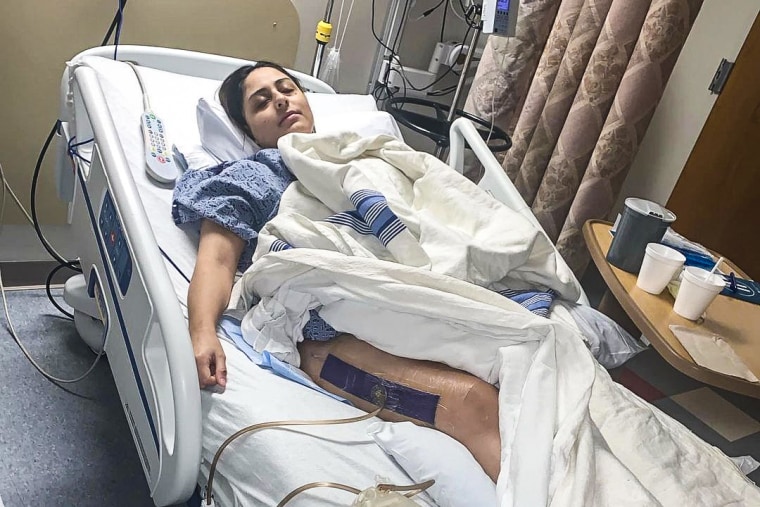A Massachusetts woman who almost lost her leg after developing a dangerous condition following a spin class is warning others to be aware of the symptoms of rhabdomyolysis.
Kaelyn Franco, 23, endured severe pain and swelling, and had to undergo emergency surgery to cut open her leg to relieve the pressure inside. Almost two months later, she’s still walking on crutches.
“It really did turn my world upside down,” Franco told TODAY about the ordeal. “It was just super traumatic and stressful.”
Rhabdomyolysis, also known as rhabdo, is a potentially life-threatening syndrome that happens when damaged muscle starts to dissolve, releasing muscle fiber contents into the blood, which can cause kidney damage.
Intense exercise can trigger rhabdo, with spin classes in particular posing “risks to newcomers,” experts have warned.

The 45-minute spin class Franco took on Sept. 15 was her first. The Marlborough, Massachusetts, resident loves to ride bikes so when the weather got colder and she joined a gym, her cousin recommended the indoor stationary bike workout.
“I was definitely pushing myself for sure, but I don’t think I was overworking myself to the point where I was like, OK I really overdid it,” Franco recalled.
“(But) as soon as I stepped off the bike, my knees just gave out and I pretty much fell. I thought that was strange at first, but then I was like maybe it’s just my muscles are tired, weak and just a little bit sore.”
Over the next day, her legs started to swell and feel “tense,” but Franco thought it was a sign she was building muscle.
The soreness turned into pain and she noticed other frightening symptoms: she had trouble walking — to the point where she was grabbing walls and counters for assistance; she found it difficult to bend her legs and she noticed her urine was turning a dark brown color.
Franco decided to go to the hospital, where tests revealed the amount of creatine kinase (CK) in her blood — an enzyme that can reveal muscle damage — was off the charts. A normal range is about 33-211 units per liter; Franco’s CK level reached more than 259,000 at one point.
She was immediately put on intravenous fluids to flush out the muscle proteins — the main treatment for moderate to severe cases of rhabdo.

But Franco developed acute compartment syndrome in her right leg — where the pressure within the muscles builds to dangerous levels, decreasing blood flow. It’s usually caused by a severe injury and can lead to permanent muscle damage, according to the American Academy of Orthopaedic Surgeons.
Doctors had to perform a fasciotomy on her right leg, an emergency surgery to cut open the skin and fascia — the membrane that keeps tissues in place — in the affected area to relieve the pressure.
Without the surgery, “you could have lost your leg… you could have also lost your life,” a doctor told Franco, she recalled.
Almost two months later, she still can’t walk without crutches and can’t lift or put pressure on her right leg. Her left leg is better, but continues to be weak. Once active, she now often stays home.
She’s hopeful that by the end of December, she’ll be down to using one crutch or a cane. Doctors told her it could take up to a year to fully recover.

Franco, who is crowdfunding to help pay for medical bills, wanted others to know about the dangers of rhabdo — a condition she hadn’t heard of before her ordeal. She’s scared to work out again, planning to focus on walking for exercise when she’s more mobile.
“I don’t want this to take away from my passion of being fit and active, but I want take it as a lesson and change some things going forward,” she said. “I definitely I want to be kinder to my body.”
Symptoms of rhabdo:
Rhabdomyolysis is rare, with about 26,000 cases reported each year in the U.S., according to the American Academy of Family Physicians.
Anyone can get rhabdo, even people in great shape and even after activities they have done in the past without a problem, the Centers for Disease Control and Prevention warned.
The warning signs include:
- Dark, red, tea- or cola-colored urine, and decreased urine output.
- Extreme muscle soreness.
- Fatigue, nausea and vomiting.
- Weakness of the affected muscles.
- Muscle swelling and tenderness.
Spinning is great exercise, but it involves using some of the largest muscles in the body — the quadriceps and the gluteus maximus — at an intense rate, Dr. Maureen Brogan, a kidney specialist who investigated three cases of “spin class-induced rhabdomyolysis,” told TODAY.
If exercise is too intense, the muscles may not get enough oxygen and start to “swell and break down and burst open,” Brogan said. “People should be aware they need to take it slow in the beginning.”

